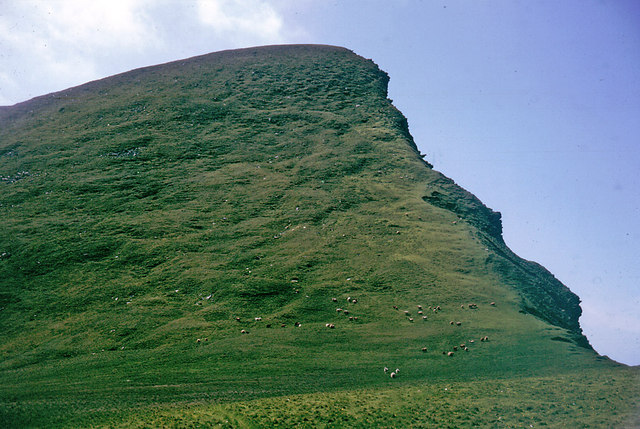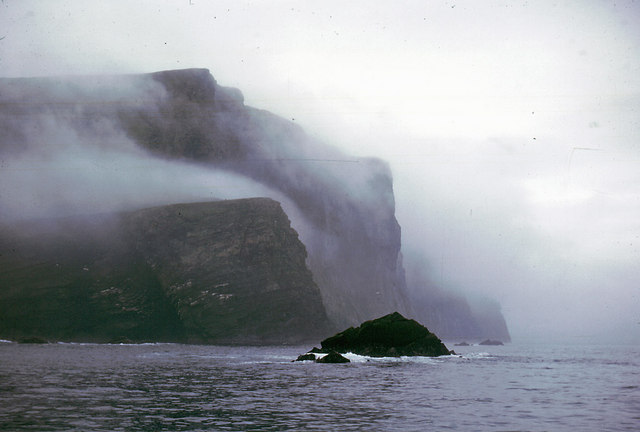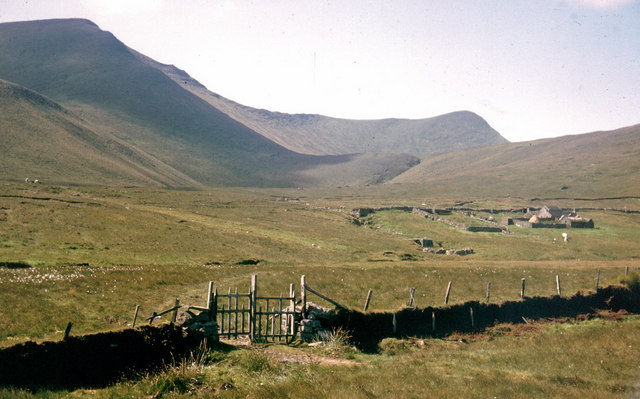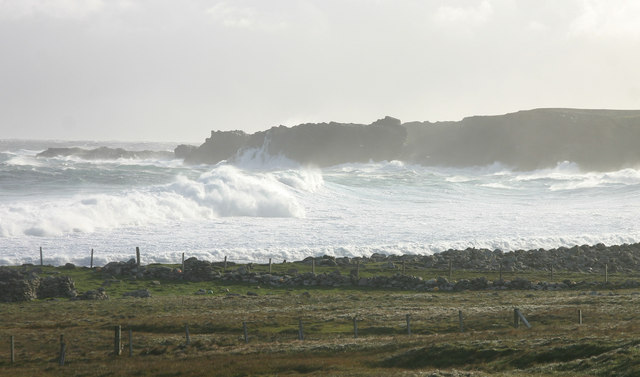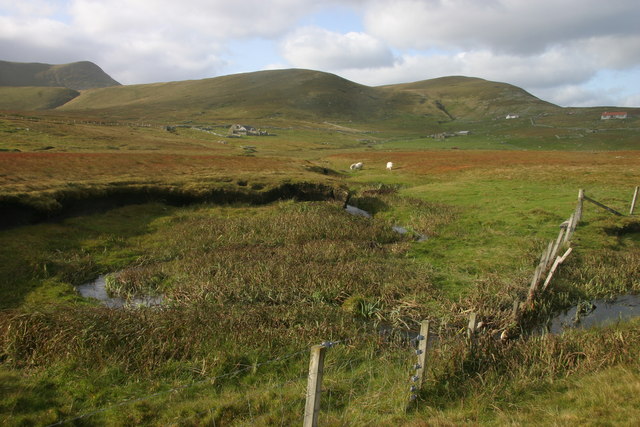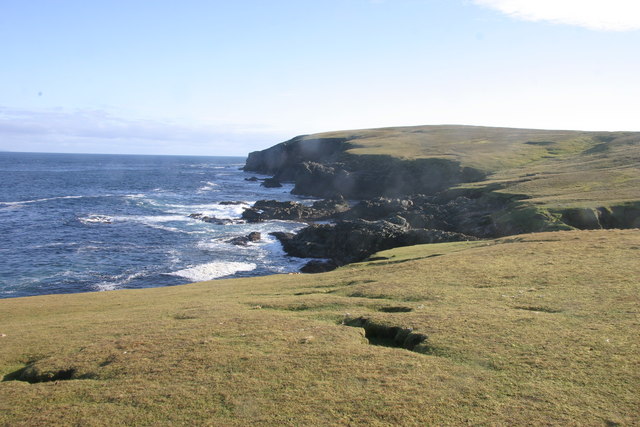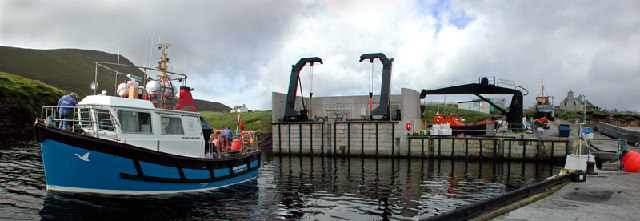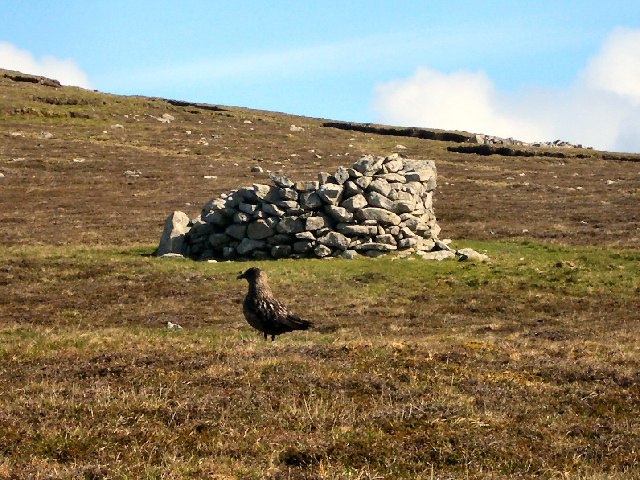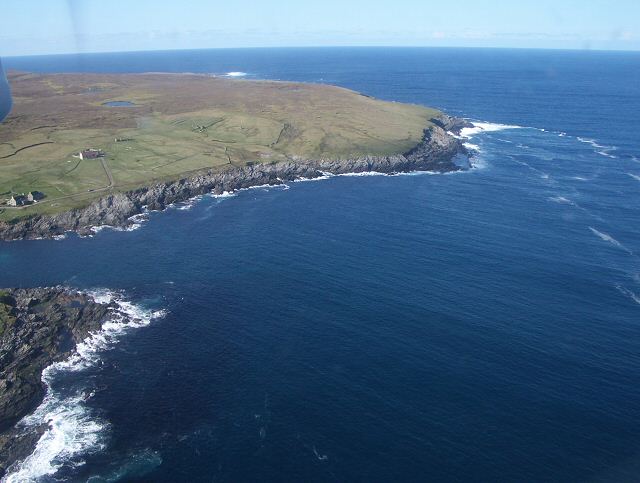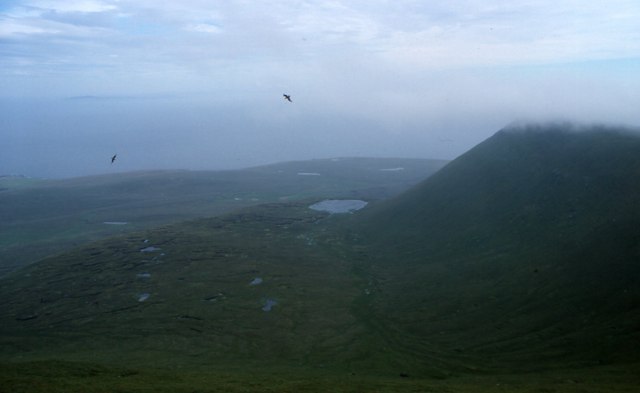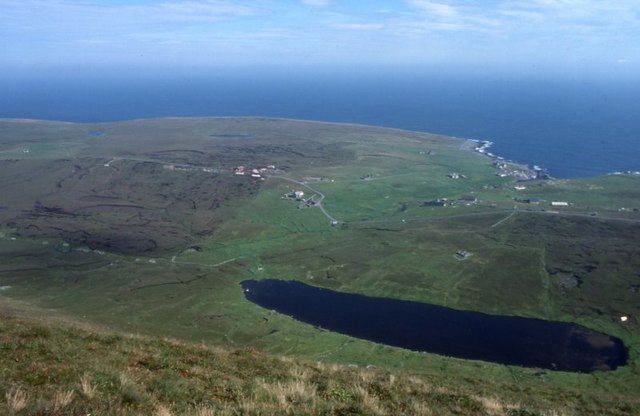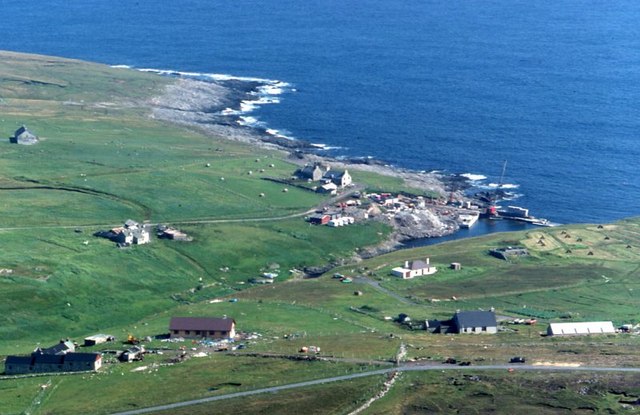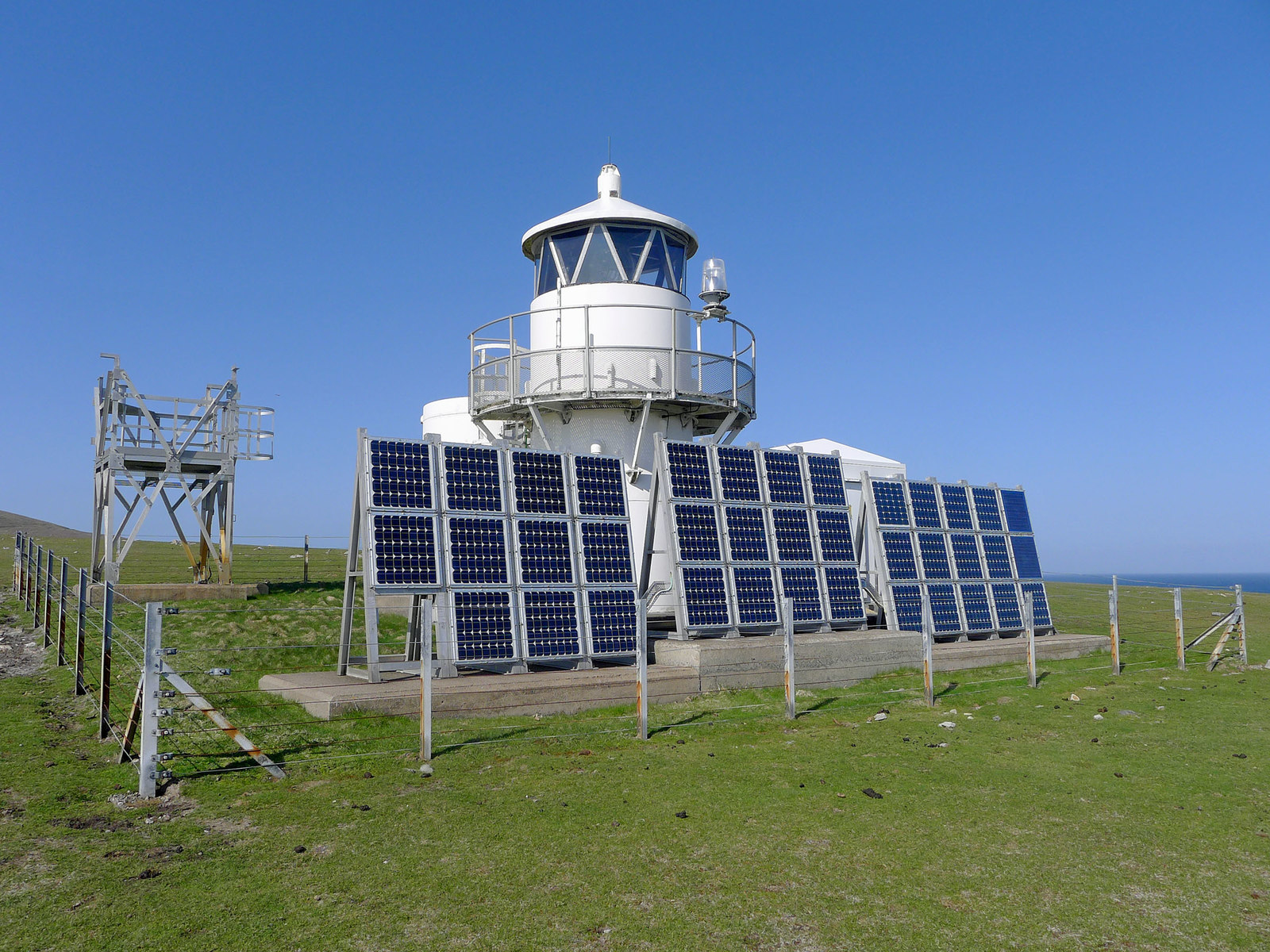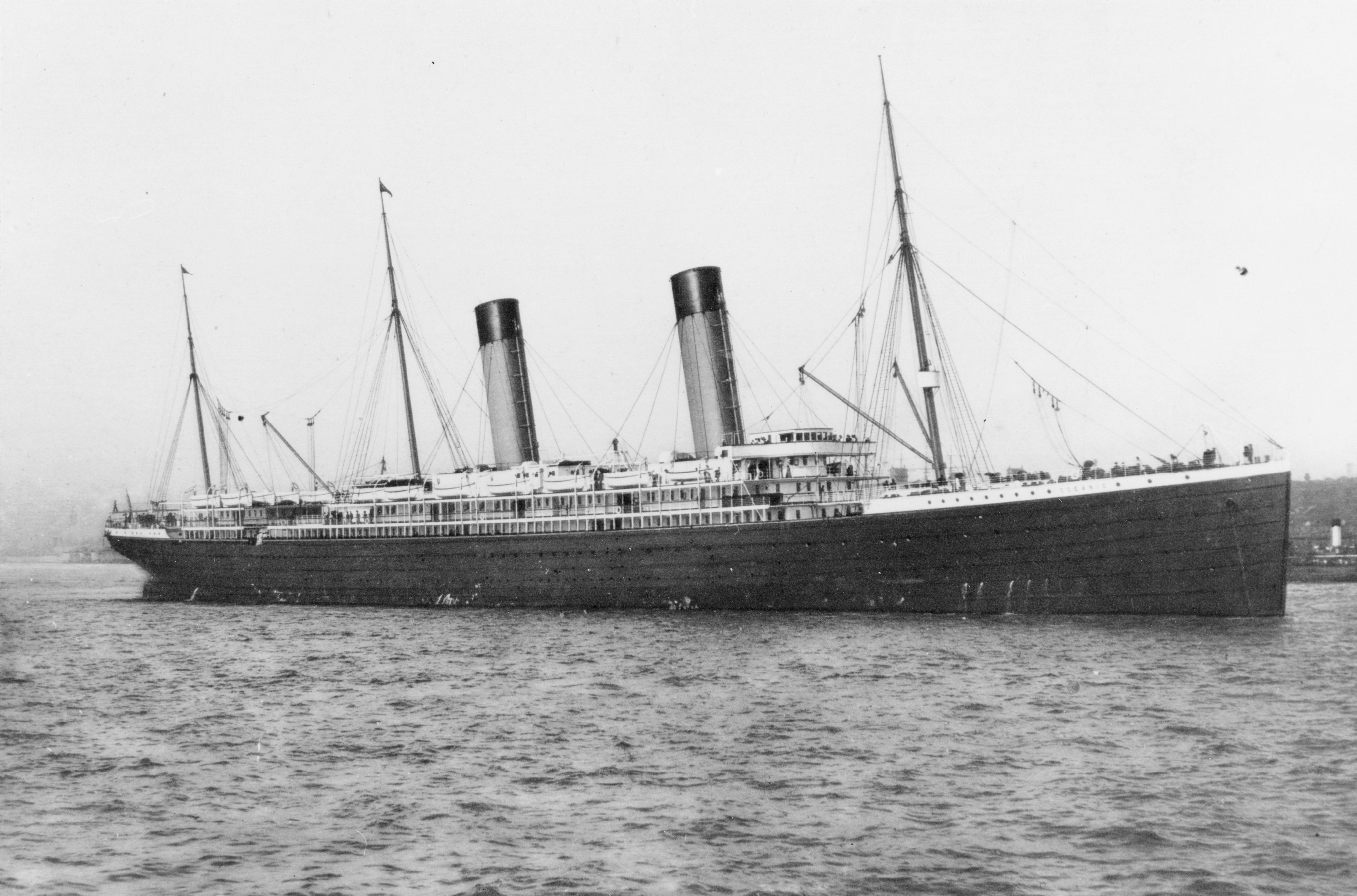Da Loch o Ouvrafandal
Lake, Pool, Pond, Freshwater Marsh in Shetland
Scotland
Da Loch o Ouvrafandal
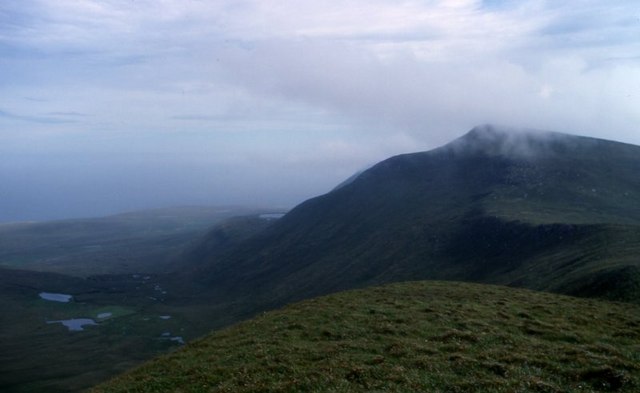
Da Loch o Ouvrafandal is a picturesque freshwater loch located in the remote and rugged landscape of Shetland, an archipelago in Scotland. Nestled amidst rolling hills and moorland, it covers an area of approximately 10 hectares, making it one of the larger bodies of water in the region. The loch sits at an elevation of about 100 meters above sea level and is surrounded by peat bogs and heather, adding to its untouched beauty.
The water in Da Loch o Ouvrafandal is crystal clear and reflects the vibrant colors of the surrounding landscape. It is fed by small streams and springs that flow from the nearby hills. The loch is known for its rich biodiversity, supporting a variety of aquatic plants and animal species. It is home to several species of fish, including brown trout and Arctic char, attracting anglers from near and far.
The area around Da Loch o Ouvrafandal is a haven for birdwatchers as well, with numerous species of waterfowl, waders, and raptors frequenting its shores. The loch also provides a vital habitat for a range of amphibians and invertebrates, contributing to the overall ecological balance of the region.
Visitors to Da Loch o Ouvrafandal can enjoy its tranquility and serenity, as well as indulge in activities such as fishing, birdwatching, and nature walks. It offers a unique opportunity to immerse oneself in the unspoiled beauty of Shetland's natural environment and experience the peacefulness of this remote loch.
If you have any feedback on the listing, please let us know in the comments section below.
Da Loch o Ouvrafandal Images
Images are sourced within 2km of 60.140384/-2.0734432 or Grid Reference HT9639. Thanks to Geograph Open Source API. All images are credited.
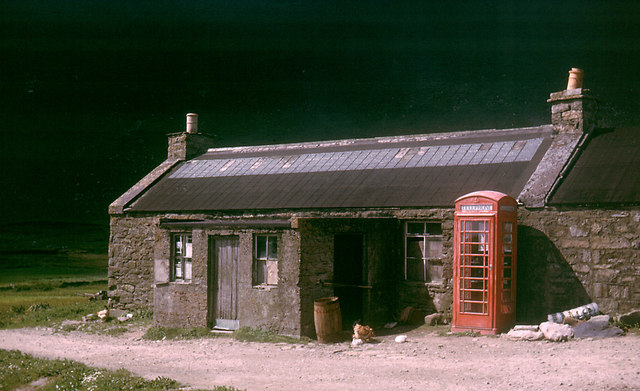
Da Loch o Ouvrafandal is located at Grid Ref: HT9639 (Lat: 60.140384, Lng: -2.0734432)
Unitary Authority: Shetland Islands
Police Authority: Highlands and Islands
What 3 Words
///glimmers.late.laugh. Near Walls, Shetland Islands
Nearby Locations
Related Wikis
Foula
Foula (), located in the Shetland archipelago of Scotland, is one of the United Kingdom's most remote permanently inhabited islands. Owned since the turn...
Foula Airfield
Foula Airfield (IATA: FOA) is an airfield located on the remote island of Foula, part of the Shetland Islands in the north of Scotland. == History == The...
RMS Oceanic (1899)
Oceanic was a transatlantic ocean liner built for the White Star Line. She sailed on her maiden voyage on 6 September 1899 and was the largest ship in...
Nearby Amenities
Located within 500m of 60.140384,-2.0734432Have you been to Da Loch o Ouvrafandal?
Leave your review of Da Loch o Ouvrafandal below (or comments, questions and feedback).
